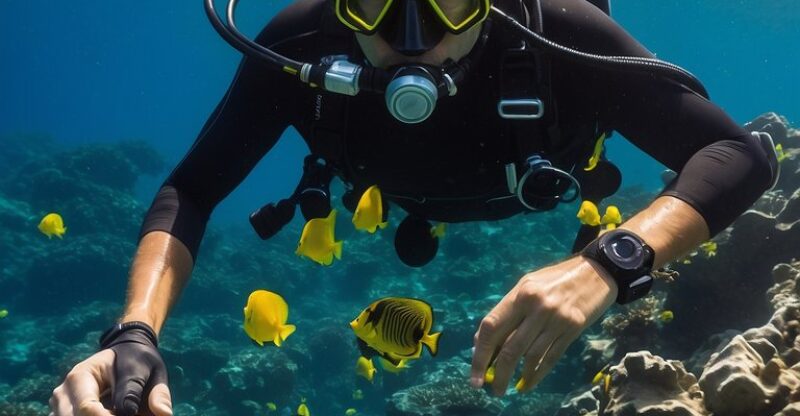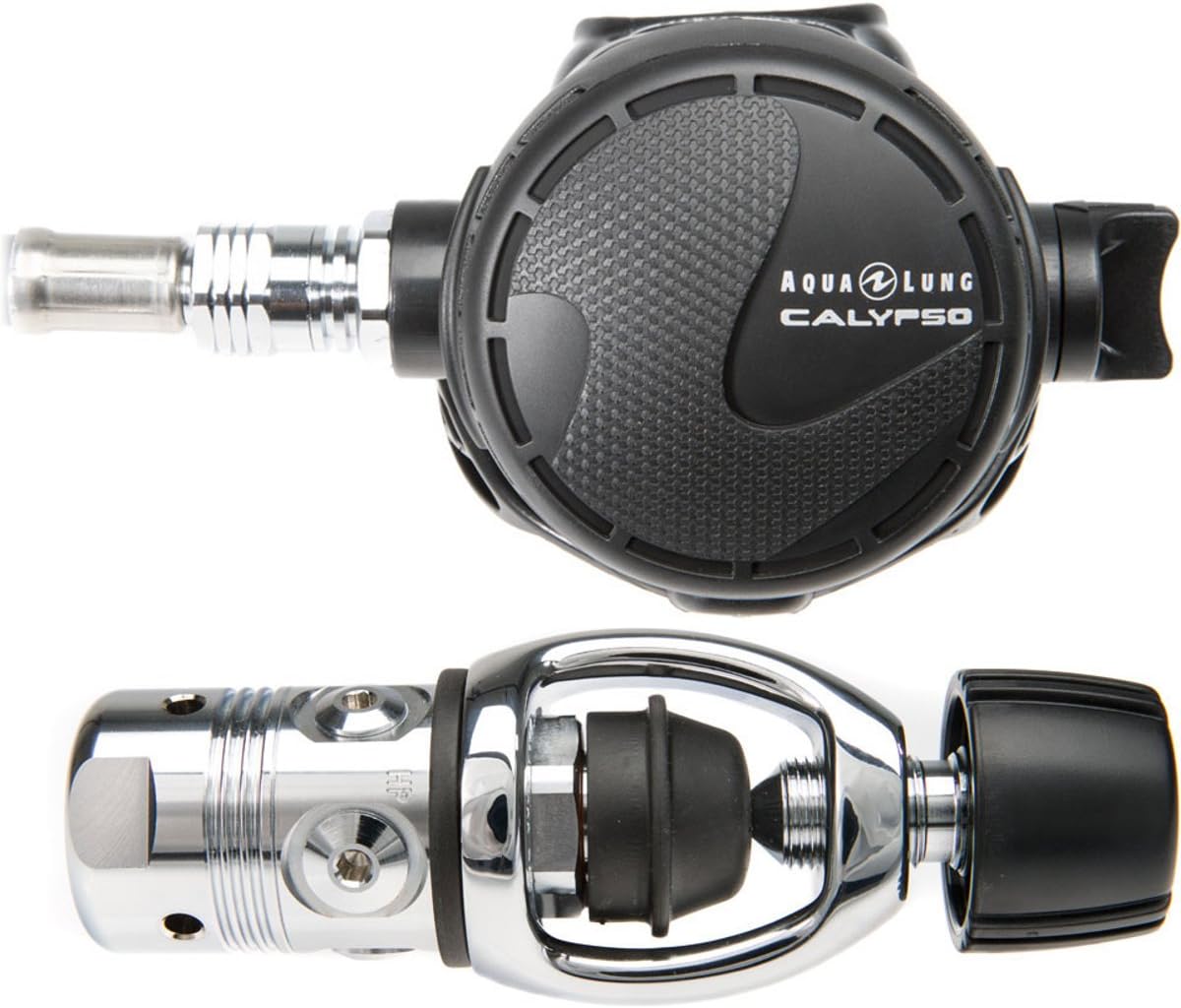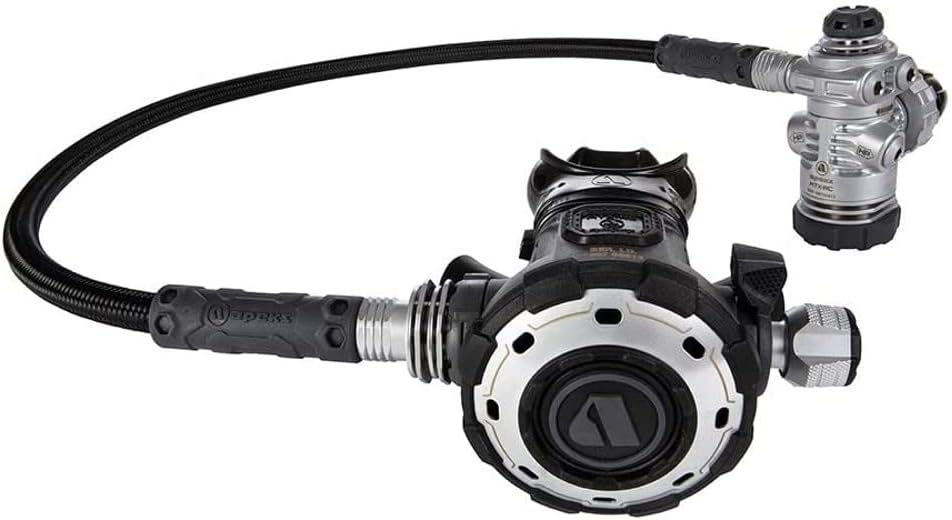Best Scuba Diving Regulators: Top Picks for Reliable Underwater Breathing
Scuba diving offers an unparalleled opportunity to explore the underwater world, but having the right gear is essential for a safe and enjoyable experience. At the heart of a diver’s equipment is the scuba regulator, a critical device that controls the flow of air from the tank to the diver. High-quality regulators can vastly improve a diver’s comfort and safety underwater. They come with a variety of specifications tailored to different diving conditions, experience levels, and personal preferences.

When selecting a regulator, divers must consider factors like the diving environment, water temperature, and their breathing preferences. Modern regulators are engineered with advanced features that cater to divers’ needs for reliability and ease of use. For instance, some are optimized for cold-water diving, while others are made to be exceptionally lightweight for travel. Investing in the best scuba diving regulator ensures optimal performance and can augment the diving experience multifold.
Key Takeaways
- A scuba regulator is vital for managing the airflow from the tank during a dive.
- Various regulators offer features suited to different diving environments and preferences.
- Proper selection is crucial for a safe and comfortable diving experience.
Understanding Scuba Diving Regulators
Scuba diving regulators are critical for safe and enjoyable underwater exploration. They allow divers to breathe compressed air from their tanks at ambient water pressure. This intricate piece of gear comes in different types, designs, and materials, each suited to specific diving conditions and preferences.
Regulator Basics
A scuba diving regulator is composed of two main stages: the first stage attaches to the tank valve and reduces incoming pressure, whereas the second stage delivers breathable air to the diver. There are two main regulator systems: balanced and unbalanced. Balanced regulators provide consistent airflow regardless of the tank’s pressure or depth, whereas unbalanced regulators may vary in performance as conditions change.
Regulator Types
Regulators are categorized into balanced diaphragm, balanced piston, and unbalanced piston.
- Balanced diaphragm designs are favored for their consistent performance at various depths and tank pressures.
- Balanced piston regulators often provide a high air flow rate, suitable for demanding dives.
- Unbalanced pistons are simpler and more economical but less consistent under varying conditions.
DIN vs Yoke: Choosing the Right Connection
Regulators connect to tanks using either a DIN or a yoke system.
- DIN regulators screw directly into the tank valve, creating a secure seal suited for higher pressures and thus are often preferred for technical diving.
- Yoke regulators clamp onto the tank valve and are commonly used in recreational diving.
Importance of an Environmental Seal
An environmental seal prevents water and contaminants from entering the regulator’s first stage, which is imperative for cold-water diving. A sealed regulator helps to reduce the risk of freezing and malfunction in cold conditions.
Materials and Construction
Regulators are made from durable materials such as marine brass, chrome-plated brass, stainless steel, and sometimes titanium for lightweight and corrosion-resistant properties. A chrome-plated brass body is standard for many regulators, offering a balance between durability and cost.
Features for Enhanced Diving Experience
To enhance the diving experience, regulators might include a venturi switch or be pneumatically balanced to aid in easy breathing. Venturi control helps prevent unwanted free-flow on the surface while ensuring optimal airflow when diving.
Maintenance and Servicing
Regular servicing is crucial to keep a regulator in good working order. Manufacturers recommend annual servicing or following a certain number of dives, though some offer a lifetime warranty contingent on adhering to their service schedule.
Regulatory Standards and Testing
Scuba regulators must adhere to standards such as the European Conformance standard EN250 and the U.S. Navy’s Class A test depth. Performance is often verified using devices like the ANSTI wet breathing simulator to ensure regulators perform safely and reliably under various conditions.
Selecting the Best Scuba Diving Regulators
When it comes to scuba diving, the regulator is a critical piece of equipment that ensures a diver’s safety and comfort underwater by delivering air from the tank. Various factors, ranging from performance and ease of use to travel-friendliness and durability, play a role in choosing the right regulator. Innovations in design cater to all levels of divers, with a spectrum of options available for different diving conditions and budget considerations.
Performance Considerations
The performance of a scuba regulator is a top priority, as it directly impacts the diver’s breathing underwater. Breathing performance relies on steady and effortless air delivery, regardless of depth or tank pressure. The work of breathing must be low to ensure the diver can inhale and exhale with minimal effort. Breathing adjustment features allow divers to finetune ease of breathing according to their preference and diving conditions.
Comfort and Ease of Use
Comfort underwater is paramount, and a well-designed mouthpiece minimizes jaw fatigue. A scuba regulator should offer ease of clearing and breathing adjustment to swiftly purge water or adjust air flow. These features enable divers to concentrate on their surroundings rather than gear management.
Travel-Friendly Features
Regulators designed for travel are often compact and lightweight, without sacrificing performance. A T-shape design is common among such regulators as it reduces space in the dive bag. These models are tailored for the mobile diver who prioritizes ease of travel.
Durability and Reliability
Made with rugged materials like stainless steel, the durability of a regulator is essential for long-term use. Reliability in a range of diving environments ensures a consistent air supply, with some high-end models offering an auto-closure device to prevent water ingress when the regulator is not in use.
Innovative Designs for the Modern Diver
Modern regs often incorporate advanced design features for enhanced performance and user experience. Innovations such as an auto-closure device or specialized materials that minimize bubble interference cater to the demands of modern diving, maintaining functionality in scenarios like cold water diving.
Regulator Options for Different Dive Types
Choosing a regulator also depends on the types of dives planned. For instance, certain regulators are optimized for recreational depth, while others are explicitly designed for the rigors of cold water diving, ensuring reliable function in demanding environments.
Choosing Regulators for Beginners to Professionals
Entry-level regulators are designed to be user-friendly for beginners, offering a balance between simplicity and necessary functionality. On the other side of the spectrum, high-end regulators feature a more extensive range of adjustment and are built to satisfy the precise needs of professional divers.
Finding an Affordable Scuba Regulator
Not all high-quality regulators come at a premium price. Some affordable options provide dependable air delivery and durability without breaking the bank. It’s a matter of matching the diver’s needs with the features offered by different models within their budget.
Frequently Asked Questions

In the selection of scuba diving regulators, divers often inquire about specific models suitable for beginners, travel-friendly features, comparisons between military and civilian units, affordable options for novices, the durability of the equipment in harsh environments, and the cost factors of quality regulators.
What are the top scuba diving regulators recommended for beginners?
For novice divers, user-friendly features such as simple breathing adjustment and reliable performance are key. Models such as the Aqua Lung Titan have been highly rated for their ease of use and comfort.
What features should be considered when purchasing a scuba regulator for travel?
Traveling divers should look for lightweight and compact regulators to reduce luggage weight and bulk. The Mares Dual ADJ 62X has been noted for its ultralight design and durability, making it ideal for on-the-go diving adventures.
How do the regulators used by military divers, such as Navy divers, compare to civilian models?
Military divers’ regulators are built to withstand extreme conditions and to perform reliably in demanding scenarios. They often feature rugged construction and enhanced performance capabilities, making them more advanced than most civilian models.
What are the best scuba diving regulators available at an entry-level price point?
Entry-level divers are typically looking for regulators that offer good performance without a hefty price tag. Brands like Ocean Trust highlight the Apeks XTX50 and Aqua Lung Titan as top choices that strike a balance between cost and quality.
Can you recommend durable scuba regulators that are known for withstanding tough conditions?
Regulators that are designed for durability often feature rugged materials and construction to cope with challenging dive conditions. High-end models like the Atomic Aquatics TFX have a reputation for exceptional build quality and resilience.
What factors determine the price range for a quality scuba regulator?
The price of scuba regulators is influenced by factors including material quality, the complexity of the design, brand reputation, and additional features such as environmental sealing. Higher-end regulators like the Atomic Aquatics B2 come at a premium, reflecting their advanced technology and materials.









